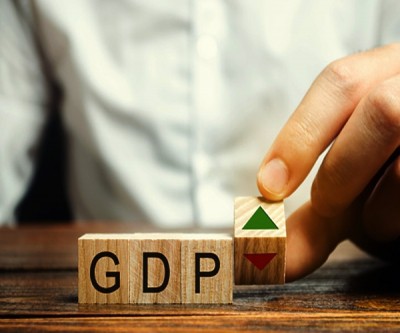New Delhi, March 5 : The Department of Economic Affairs (DEA) of the Finance Ministry has said that following the growth of Gross Value Added (GVA) for FY21 would be more appropriate rather than tracking the GDP growth (contraction) which has been “distorted” for the current financial year.
The Monthly Economic Review for February released by the DEA noted that the food and fertiliser subsidy from the budget estimate (BE) to the revised estimate (RE) of 2020-21 increased by Rs 3.7 lakh crore. After making adjustments for pre-payment of loans of Rs 2 lakh crore taken for paying subsidy of previous years, the balance Rs 1.7 lakh crore emerged as the additional subsidy paid in the pandemic year.
This enhancement of gap between BE and RE caused the growth of subsidies to be significantly higher than the growth of indirect taxes, it said.
Consequently, the report noted that GVA growth became higher or in other words GVA contraction became smaller than that of the GDP.
In FY 2021-22, the annual growth of subsidy estimated over the unusually large base of the previous year will again become lower than the growth of indirect taxes.
“Real GDP growth will then exceed real GVA growth in FY 2021-22. Since GDP growth (or contraction) has been distorted in FY 2020-21 on account of significant growth of subsidies, GVA growth is a more appropriate measure to follow in the current year,” the report said.
The second advance estimates of National Income for FY 2020-21 recently released by the NSO indicate real GDP contraction at 8 per cent, larger than real GVA contraction of 6.5 per cent. This is not a normal occurrence.
Real GDP growth has been higher than real GVA growth since 2011-12 when estimation of National Income in India moved to a new base year. GDP is GVA plus indirect taxes net of subsidies, and GDP growth is higher than GVA growth when growth of indirect taxes is higher than growth of subsidies.
The annual growth of indirect taxes between 2012-13 and 2019-20 has been higher than the annual growth of subsidies. The year 2019-20 is an exception as the data is yet to reach the finalisation stage, it noted.
Talking of the economic recovery, it noted that the recovery of global output has slowed following re-imposition of lockdowns in the advanced countries amid renewed Covid-19 waves and its emerging variants.
However, economic activity in India has gathered pace with mild stiffening of the Covid-19 curve failing to deter a steady uptick in consumer sentiment, which has been bolstered by the inoculation drive.
“Positive GDP growth in Q3 of FY21 for the first time since the onset of the pandemic adds to the positive sentiment as the economy is set to close the year with activity levels higher than measured in the second advance estimates of GDP,” it said.
Disclaimer: This story is auto-generated from IANS service.

